Positive Pressure Ventilation System: Dr. Gordie Jones’ Concept
Case Stories from Silverridge and Pfister Dairy Farm in Ontario, Canada
Positive pressure or all-seasons hybrid ventilation by Dr. Gordie Jones is a ventilation concept where the barn is positively ventilated part of the year and naturally ventilated the rest of the year. It is a combined hybrid of both natural and positive ventilation. The temperature fluctuation throughout the year is easily adjusted with this ventilation concept. That is why it is called ‘’all-seasons hybrid’’.
Dr. Gordie Jones said, “It doesn’t matter where you are in the barn; every cow now has equally fresh air’’. As this concept adjusts the barn to the temperature conditions and seasons, the ventilation equipment in the barn are then adjusted in three different states according to the temperatures: when the temperature reaches above 20 degree Celsius, in mild weather (between -5 degrees to 19 degrees Celsius), and cold weather (lower than -5 degrees Celsius).
We have implemented the positive pressure ventilation system in some dairy barns. The most recent ones are in Pfister dairy farm, Ontario, Canada which just had the system installed in the early summer of 2022, and several months before that was Silverridge farm, Ontario by the end of 2021. Now we are going to share the case stories, how this system works, and hear the experiences of the farm owners here.
Positive Pressure Ventilation – how it works
Above 20 degree
The positive pressure occurs when the temperature reaches higher than 20 degrees Celsius. In these temperature conditions, the 50’’ recirculation fans that are installed at tilt position on both lengths of the sidewall are turned on over the free stalls. Meanwhile, all the curtains on the sidewalls are closed. With this setup, the fans push fresh air and cool down the cows when they are resting in their beds. On these two farms, our BF 50 SuperFlow fans act as pressure fans, and the long air throw of the fans travels all the way cooling the backs of the cows in the feed alley. In both Silverridge and Pfister Dairy, the BF 50 pressure fans were installed in a 6-row barn. Some Big Air PÜRe ceiling fans are installed below the ridge, but they are turned off during the summer. The ridge is fully open, and the exhaust air is going up through the center of the ridge. The ridge uses single curtains, so the opening of the ridge is regulated through the curtains.
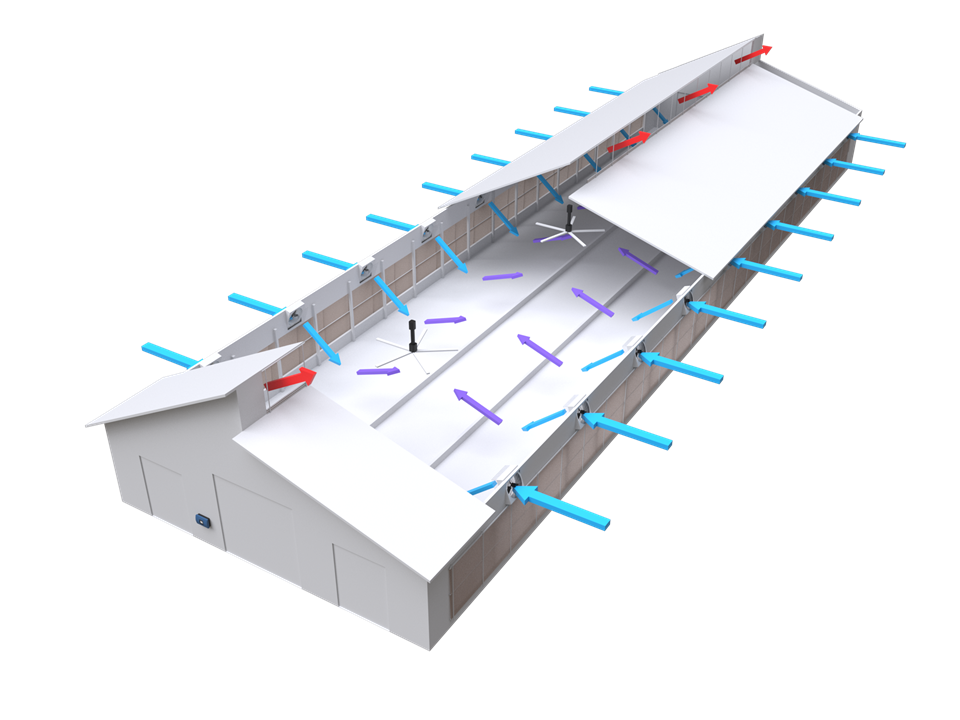
See the drawings above and below to understand the adjustments in different temperature conditions.
Mild weather, from -5 degrees Celsius to 19 degrees Celsius
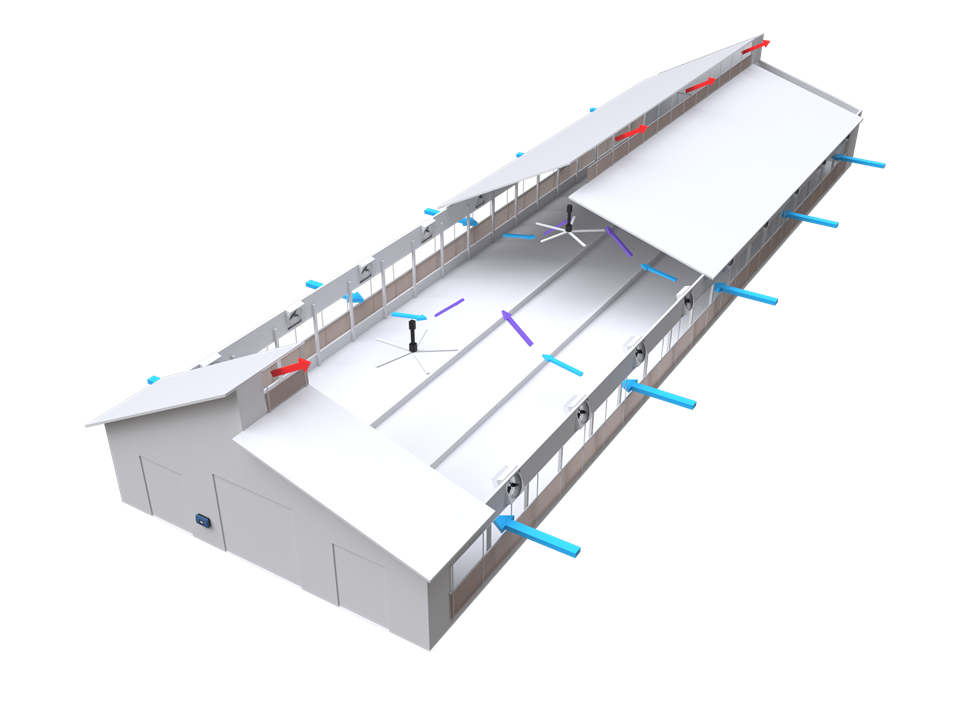
In this temperature state, the natural ventilation principle applies, so the sidewall curtains are partially closed to fully open, and no recirculation fans are turned on. Our Big Air PÜRe ceiling fans can operate on demand when there is a need to have the air mixed downwards and to warm up the building at cow level. The ridge is partially closed to fully open, so the fresh air from the outside comes in from the sidewalls and is going up through the center of the ridge.
Cold weather, below -5 degrees Celsius
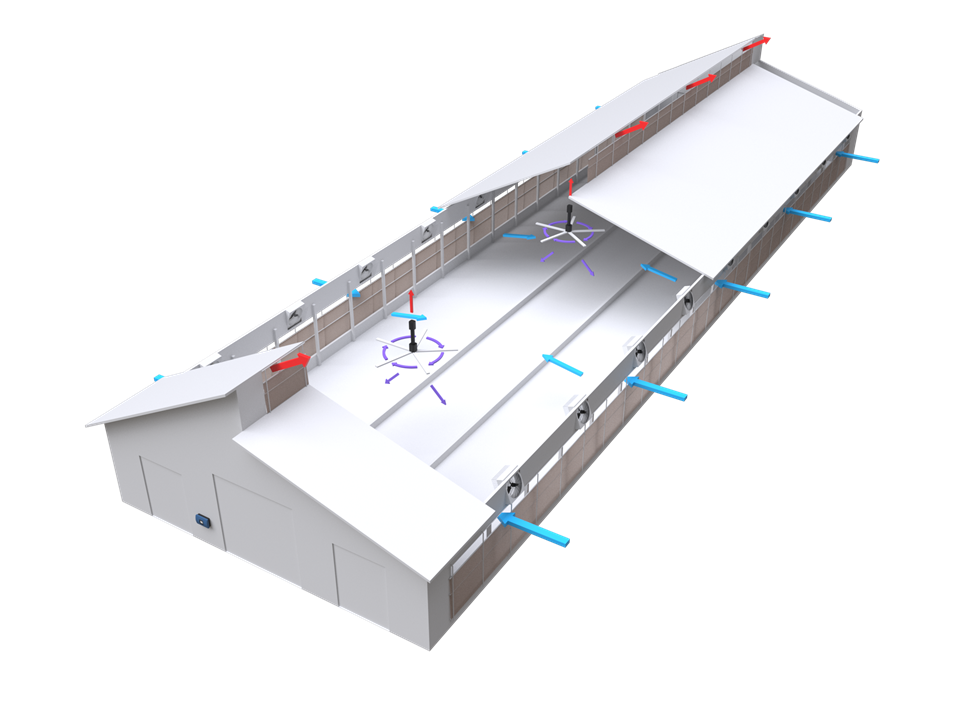
During the cold weather, the curtains on the sidewalls are partially open and the opening is adjustable to the weather condition outside. With this setup, they still allow some fresh air to enter the barn. The curtain on the ridge is partially open, allowing warm air and moisture to escape. Both curtains on the roof and sidewall curtains are regulated to provide four continuous air exchanges per hour. Here, the single curtain is also fully adjustable to prevent snow and precipitation from entering the barn. The HVLS fans, our Big Air PÜRe ceiling fans are turned on and rotate slowly, mixing the air and pushing it downwards, warming the building at cow level.
Benefits of the system
- Every cow in the barn has equally fresh air and good airspeed, exactly where they need it.
- During the hot humid days in the summer, the cows don’t exhibit signs of heat stress.
- More suitable for the long barn, as the path of the air in the barn is short. With positive pressure ventilation, there is a better repartition of fresh air in all parts of the barn.
- The cost of operation is close to the natural-ventilated barns with assisted recirculation fans and nearly 1/3 of the tunnel and cross tunnel ventilation.
- Preventing manure from freezing during the winter.
- Compared to tunnel-ventilated barns, there is no short circuit of air when a door is open.
- No power generator is required for the fans, in case there is a power failure during the summer. The barn will just be operating in natural ventilation mode.
- The ridge opening also brings natural light to the feed alley.
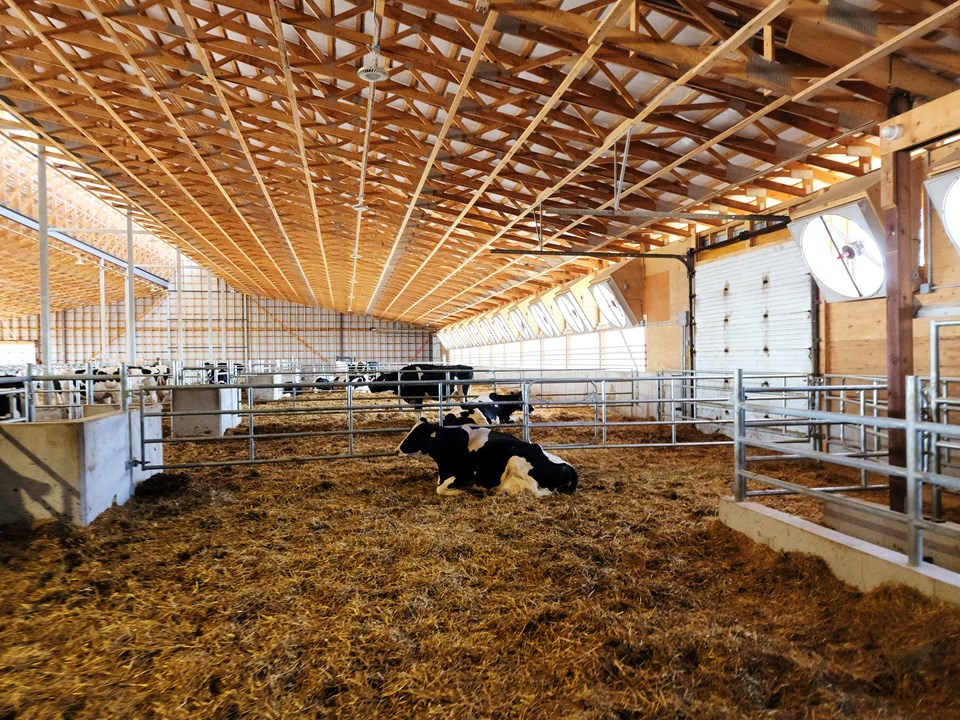
In Silverridge farm, the owner was happy as the quantity of straw required to maintain a dry bed in the summer has dropped drastically by 80%. Economically, this surely has a positive impact.
Here on this farm, the farm owner has retrofitted the naturally-ventilated older part of the building into a positive pressure barn by adding some 36’’ pressure fans on both sidewalls. This older part is a 4-row barn. At the same time, he created an extension by making a new 6-row barn and installing some 50’’ recirculation fans on the sidewalls (BF 50 pressure fans). During the summer, the farm owner feels a high-speed air movement in the stalls.
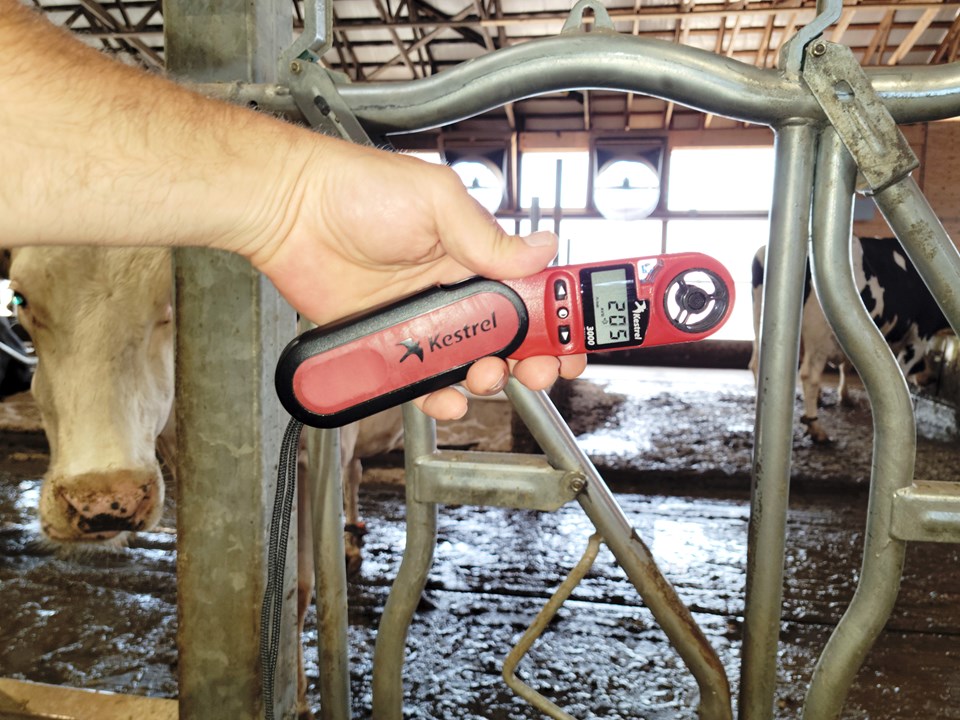
Dan Dykxhoorn, the farm owner of Silverridge farm says, ‘’We have been using 80% less straw in the bedding this summer when the pressure fans are turned on.’’
In Pfister Dairy farm, they use BF 50 SuperFlow with variable PM motors. Here, the farm owner feels the tangible benefit as the fans are adaptive to the cows’ ventilation requirements with a smooth transition – always providing the correct air velocity.
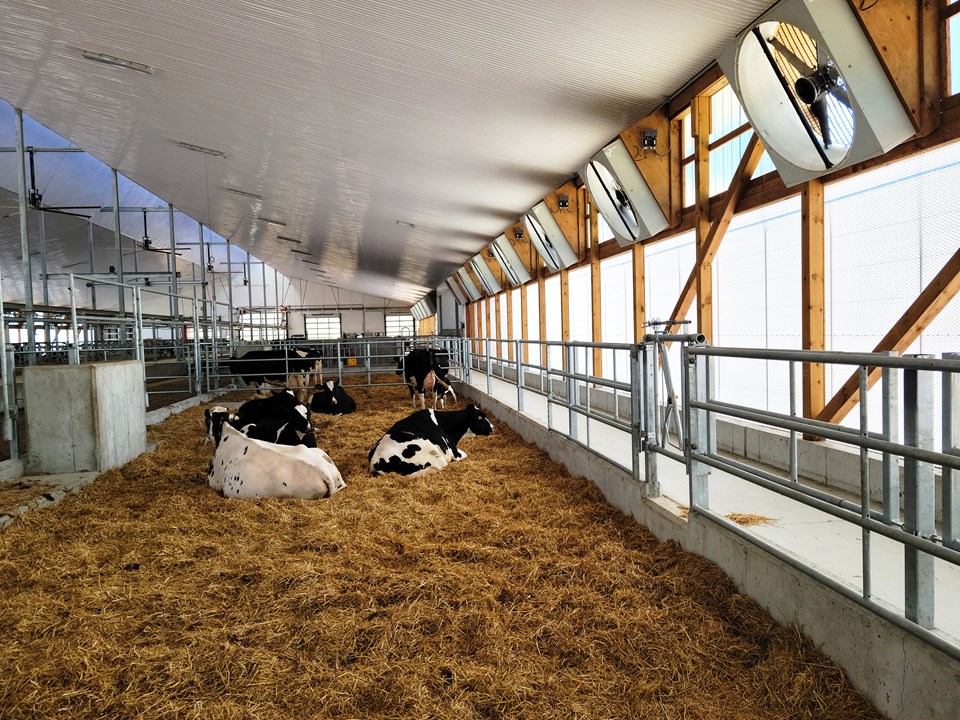
“We love this because this system has met our expectations. It is so comfortable inside the barn, we enjoy working here even when it is very hot outside. There are absolutely no flies here in the barn!’’ says the farm owners - Hans, Ashley, and Marco Pfister.